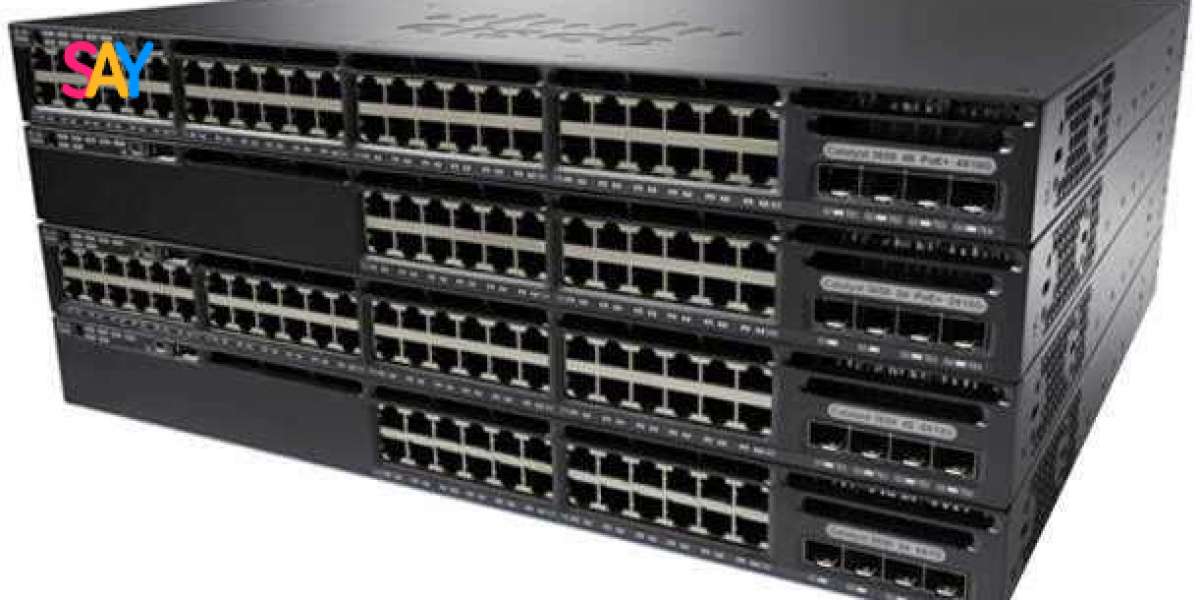Introduction
Cisco switches are an integral part of computer networking and play a crucial role in connecting devices within a local area network (LAN). A switch is a networking device that operates at the data link layer (Layer 2) and sometimes at the network layer (Layer 3) of the OSI model. It is responsible for receiving, processing, and forwarding data packets between network devices.
Cisco Systems, Inc., a leading provider of networking equipment and solutions, offers a wide range of switches to meet the diverse needs of organizations, from small businesses to large enterprises. Cisco switches are known for their reliability, performance, and feature-rich capabilities.
Here are some key concepts and features related to Cisco switches:
Port Density:
Cisco switches come in various sizes, offering different numbers of Ethernet ports. Switches can have a few ports (e.g., 8 ports) up to hundreds of ports, allowing for the connection of numerous devices.
Speed and Standards:
Cisco switches support different Ethernet speeds, including Fast Ethernet (10/100 Mbps), Gigabit Ethernet (10/100/1000 Mbps), and even 10 Gigabit Ethernet (10 Gbps). They comply with industry standards such as IEEE 802.3 for Ethernet.
VLANs:
Virtual Local Area Networks (VLANs) allow switches to logically segment a network into smaller broadcast domains. VLANs enhance security, performance, and manageability by grouping devices based on criteria such as departments, functions, or projects.
Layer 2 and Layer 3 Switching:
Cisco switches can operate at Layer 2, where they primarily use MAC addresses to forward packets between devices. They can also perform Layer 3 routing functions, using IP addresses to make routing decisions and connect different networks.
Quality of Service (QoS):
QoS features enable Cisco switches to prioritize certain types of network traffic, ensuring critical applications receive the necessary bandwidth and minimizing latency or packet loss.
Redundancy and High Availability:
Cisco switches support features such as Spanning Tree Protocol (STP), Rapid Spanning Tree Protocol (RSTP), and Virtual Router Redundancy Protocol (VRRP) to provide redundancy and failover capabilities for uninterrupted network operation.
Management and Configuration:
Cisco switches can be managed through a command-line interface (CLI), web-based graphical user interface (GUI), or network management platforms like Cisco Prime Infrastructure. They offer extensive configuration options, monitoring tools, and reporting capabilities.
Security:
Cisco switches provide various security features, including access control lists (ACLs), port security, DHCP snooping, IP source guard, and secure management protocols (SSH, SNMPv3), to protect the network from unauthorized access and attacks.
These are just a few highlights of Cisco switches. The product portfolio includes switches for different deployment scenarios, such as access switches for connecting end-user devices, distribution switches for aggregating traffic, and core switches for high-performance backbone networks. Cisco switches are widely used in enterprise networks, data centers, service provider networks, and small office/home office (SOHO) setups, offering scalability, flexibility, and advanced networking capabilities.
Implementing Quality of Service (QoS) on Cisco Switches
Implementing Quality of Service (QoS) on Cisco switches involves configuring the switch to prioritize and manage network traffic based on specific requirements. QoS helps ensure that critical applications receive the necessary bandwidth, reduce latency, and minimize packet loss. Here's an overview of the steps involved in implementing QoS on Cisco switches:
Traffic Classification:
The first step is to classify the network traffic into different categories based on criteria such as application type, source/destination IP addresses, VLANs, or protocols. This can be done using access control lists (ACLs) or Network-Based Application Recognition (NBAR) on Cisco switches.
Define QoS Policies:
Once the traffic is classified, you need to define QoS policies that specify how each category of traffic should be treated. QoS policies include parameters such as bandwidth allocation, priority levels, and queueing mechanisms.
Enable QoS Features:
Cisco switches support various QoS features that can be enabled to enforce the defined policies. Some common QoS features include:
Classification and Marking:
Use classification and marking mechanisms like Differentiated Services Code Point (DSCP) or IP Precedence to mark packets with appropriate QoS labels. This helps downstream devices prioritize the packets.
Congestion Management:
Configure queueing mechanisms such as Weighted Fair Queueing (WFQ), Class-Based Weighted Fair Queueing (CBWFQ), or Low Latency Queueing (LLQ) to manage congestion and allocate bandwidth based on priority.
Traffic Shaping and Policing:
Implement traffic shaping to control the traffic rate and prevent bursts, or traffic policing to enforce traffic limits and discard excess traffic beyond defined thresholds.
Link Efficiency Mechanisms:
Features like Link Fragmentation and Interleaving (LFI) or Payload Compression can be used to optimize the utilization of WAN links.
Apply QoS Configurations:
Apply the QoS configurations to the appropriate interfaces, VLANs, or specific traffic flows using policy maps, service policies, or interface-level configurations.
Monitor and Fine-Tune:
After implementing QoS, it's important to monitor the network traffic and QoS statistics to ensure the desired results. Use tools like NetFlow, Simple Network Management Protocol (SNMP), or Cisco IOS Embedded Event Manager (EEM) for monitoring. Fine-tune QoS configurations as needed to optimize performance.
It's worth noting that the specific steps and commands for implementing QoS may vary depending on the Cisco switch model and software version you are using. Therefore, it's recommended to consult the Cisco documentation, and configuration guides, or seek assistance from Cisco support or networking professionals familiar with Cisco switches to ensure accurate implementation of QoS on your specific switch.
Conclusion
In conclusion, Cisco switches are essential networking devices that facilitate connectivity within local area networks (LANs). They offer a wide range of features and capabilities, making them suitable for various network deployment scenarios, from small businesses to large enterprises.
Implementing Quality of Service (QoS) on Cisco switches is crucial for managing and prioritizing network traffic. By properly configuring QoS policies, and traffic classification, and enabling QoS features, organizations can ensure that critical applications receive the necessary bandwidth, reduce latency, and minimize packet loss. QoS on Cisco switches involves classifying traffic, defining policies, enabling features like classification and marking, congestion management, traffic shaping, and monitoring network performance.
Cisco switches are known for their reliability, performance, and scalability. They provide a robust set of management and configuration options, security features, and redundancy mechanisms to ensure network stability and high availability.
It's important to consult the Cisco documentation, and configuration guides, or seek assistance from Cisco support or networking professionals to accurately implement QoS on your specific Cisco switch model and software version. With proper implementation, QoS on Cisco switches can significantly enhance network performance and optimize the utilization of network resources.




